
When and where to spot 12 of the most iconic Scottish wildlife
Thursday, 26 January 2023
Scotland, with its myriad of coasts and spectacularly wild Highlands, is a haven for spotting wildlife. Whether it be on land, on the water or flying above, you might just catch sight of one of these iconic animals. Here is a list of when and where to spot these majestic creatures.
Pine Martens
Pine Martens, with their easily recognisable brown fur and white chest, can be seen throughout the year and are most often spied hunting on the long summer evenings. The are mostly found in wooded areas of Scots pine or even on rocky areas like this image here taken a few years ago on the beach in front of Ardgour. You may have a chance of spotting them while on our Taste of the Hebrides or Loch Ness and the Caledonian Canal cruises.

The White Tailed Eagle (Sea Eagle)
The White Tailed Eagle or Sea Eagle, UK’s largest bird of prey, can be found nesting on the coasts of Scotland, Ireland and the south coast of England. Throughout the year, these wonderful hunters can be seen in pairs on the islands of Rum, Mull and Skye and even on the East coast of Scotland due to a successful reintroduction. This image was taken by Jonathan Neville while on our Skye and the Small Isles cruise.

Red Deer
Red Deer is Scotland’s largest land mammal and they are seen all year round, like this image taken in June 2021 by Harvey Trop while on our Isle of Skye and the Inner Hebrides cruise. In the rutting season between September and late October you can hear the rutting of antlers and the call of the stags, a truly iconic sound. The islands of Islay and Jura may also be good places to spot one of Scotland's Big Five Wildlife.

Orca (Killer Whale)
Orca are most commonly seen on the west coast of Scotland,Orkney and Shetland. These top predators can be seen throughout the year and can be spotted, if you’re lucky, from their distinctive black dorsal fins and black and white colour. This image was taken in 2017 by Ivan Reynolds of John Coe and Aquarius, regular visitors to the Sound of Mull.

Basking Shark
The second largest fish in the world frequent coastal waters including the Inner Hebridean islands of Coll and Mull during the summer months of May to October. Although large, they are extremely slow in the water, feeding on plankton with their mouths wide open. This image was taken by one of our Skippers during our 2020 season, showing you need a keen eye to spot these gigantic gentle creatures.
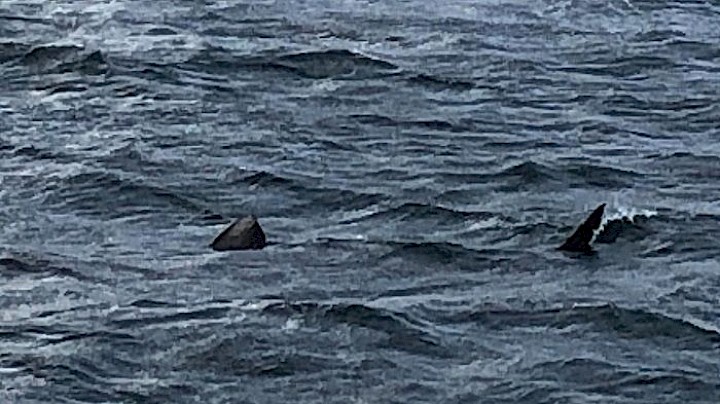
Otter
Otters are playful mammals with Olympic swimming abilities. Found mostly on the coasts around the UK, they are excellent hunters while still remaining extremely elusive. Our guest Alan Charlton managed to capture this wonderful creature on his Around Mull: Wildlife Explorer cruise in 2021.

Red Squirrel
Native to Scotland, these shy animals are mostly seen in woodlands. Although seen all year round, winter is a great time to see their bushy tails and thick fur. They are more common in the west coast of Scotland due to the introduction of the grey squirrel in the east coast. This little chap somehow made his way onboard our boat back in 2012 and was safely transferred back to his natural habitat before the cruise to South Argyll set off.
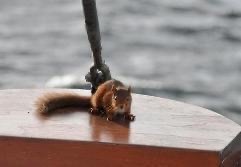
Puffin
Puffins are unmistakable with their black and white feathers, orange legs and colourful little beaks. They can be found on the coasts of Scotland nesting on grassy cliff edges during the months of March to August, but the best time to see them is between March and May. Although they are sea birds who frequent Orkney, Shetland, St Kilda and other remote islands, they can be seen on Mull, Staffa and Lunga on the Treshnish Isles, like this photo taken by Moira Ratcliffe in 2022.
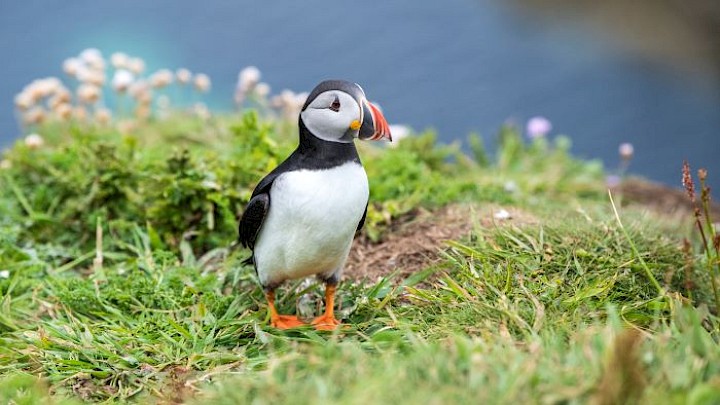
Dolphin
Common and Bottlenose Dolphins are featured along all the UK coasts throughout the year. They love riding in the bow waves of boats and common dolphins can be seen frolicking in groups of up to 100 at a time. It doesn’t matter if you’ve seen dolphins hundreds of times, when they decide to play alongside the boat, it’s an experience to remember. This photo by Mike Gray last year captures their nature perfectly while this video lets you see the playful creatures alongside the boat.
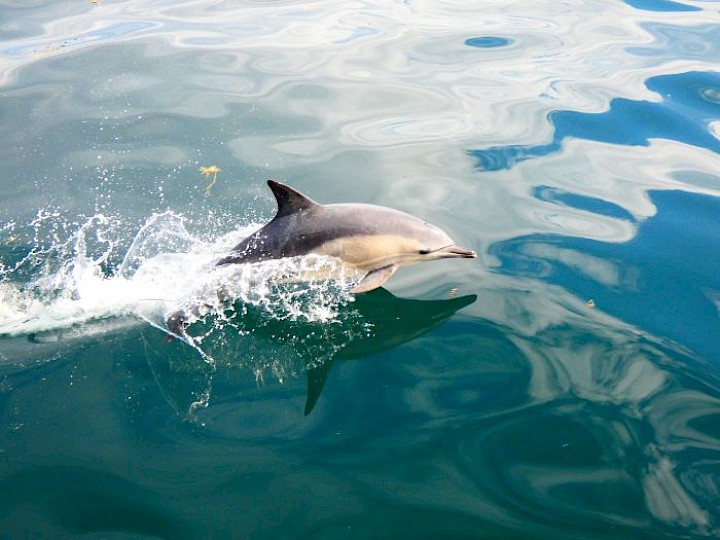
Dolphins Riding Bow Wave of Glen Etive
Seals
Grey Seals and Harbour (Common) Seals are found in all UK waters, with the grey seal being the larger of the two. You can spot them on rocky shores along the coast from January to December and during October to December you may be lucky enough to spot fluffy white seal pups. The islands of Mull, Iona and Staffa see seals all year and you can be certain of curious visitors alongside boats, especially in Autumn, as they fish for food to keep them going through the winter. This harbour seal was spotted by Ian Fleming in Loch Scavaig in 2021, basking in the summer sunshine.
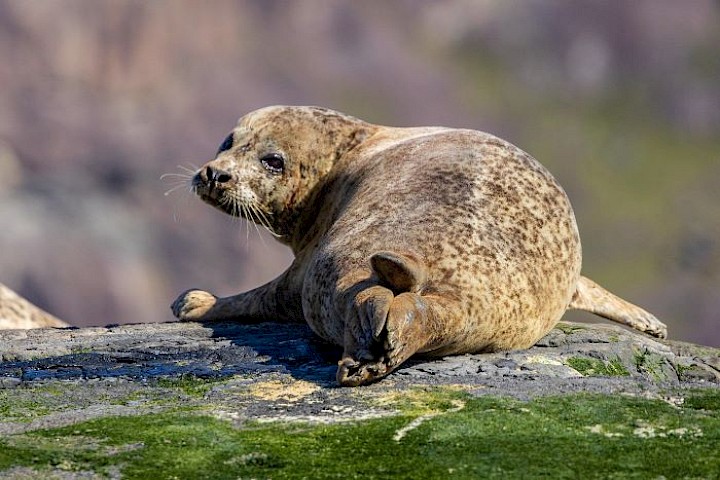
Greylag Goose
The Greylag Goose is the largest wild goose in the UK with an orange beak, dark grey wings and light grey chest. They like nesting in farmlands, moorlands and wetlands and are native to UK coasts. These geese captured by Moira Ratcliffe were spotted in Bunessan, in the Ross of Mull on a calm June day. You can easily spot them all year round as truly wild geese nest in Scotland and others from Iceland migrate here for the winter.
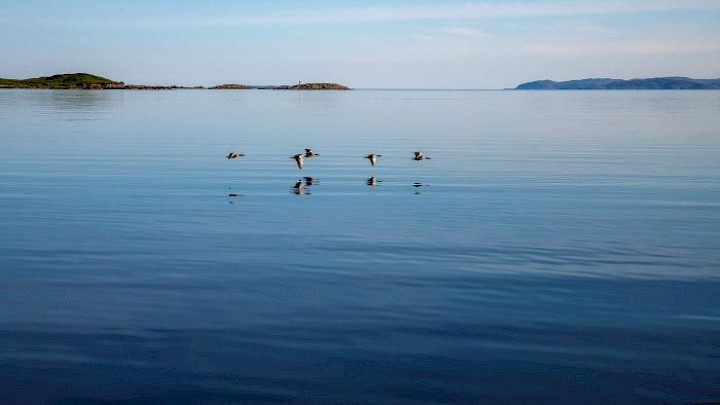
Minke Whale
Minke whales are the smallest of the baleen whale species at just 10 metres fully grown. They are commonly found on the west coast of Scotland between the months of April and October, near the Inner Hebridean islands of Mull, Skye and the Small Isles of Rum, Eigg and Muck. They are easily recognisable by their sleek bodies and small black dorsal fin. They are inquisitive creatures and playful too which this image by Gavin Mann shows of a breaching whale.
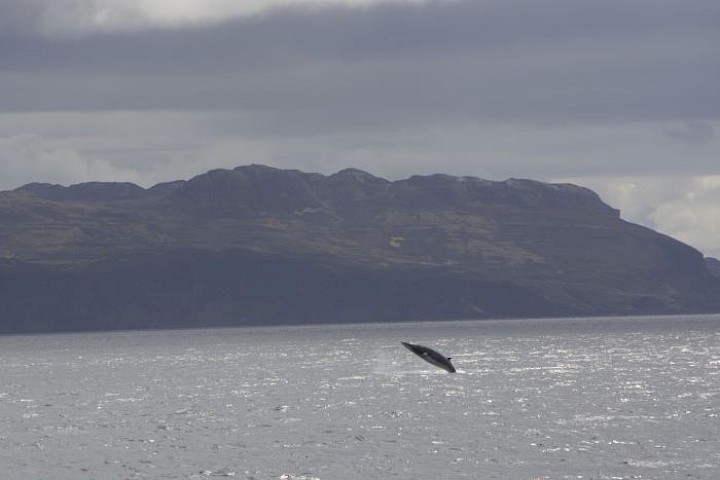
We were "the trip" that saw minke whale twice; once definitely curious about the boat and following us, plus then coming up both sides to look at us. Then the spectacular sight of a minke whale breaching, not just once but a number of times! Peter, the skipper was delighted and Marina squealed with joy which was delightful as it was such a natural reaction made special as she lives and works in the area yet also found this sight amazing.

